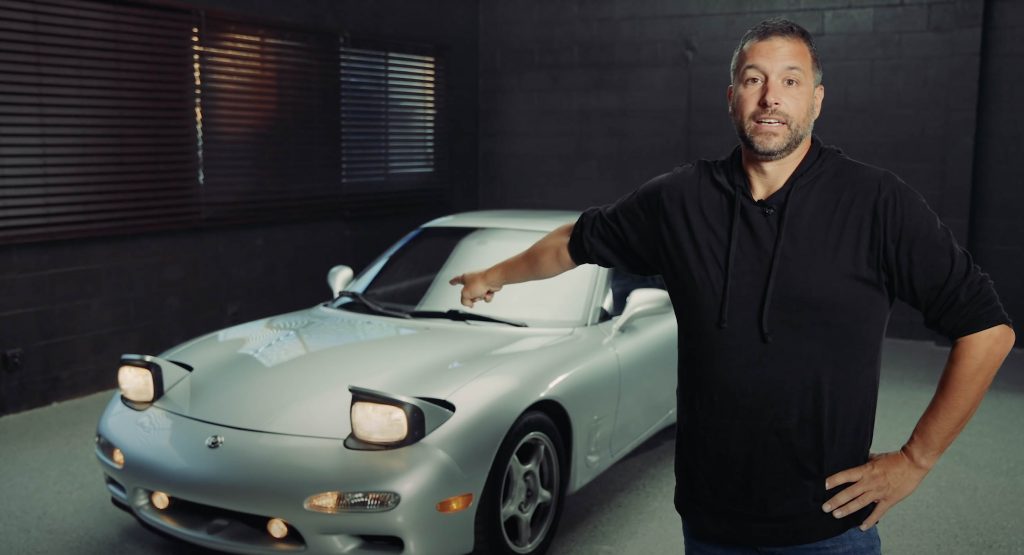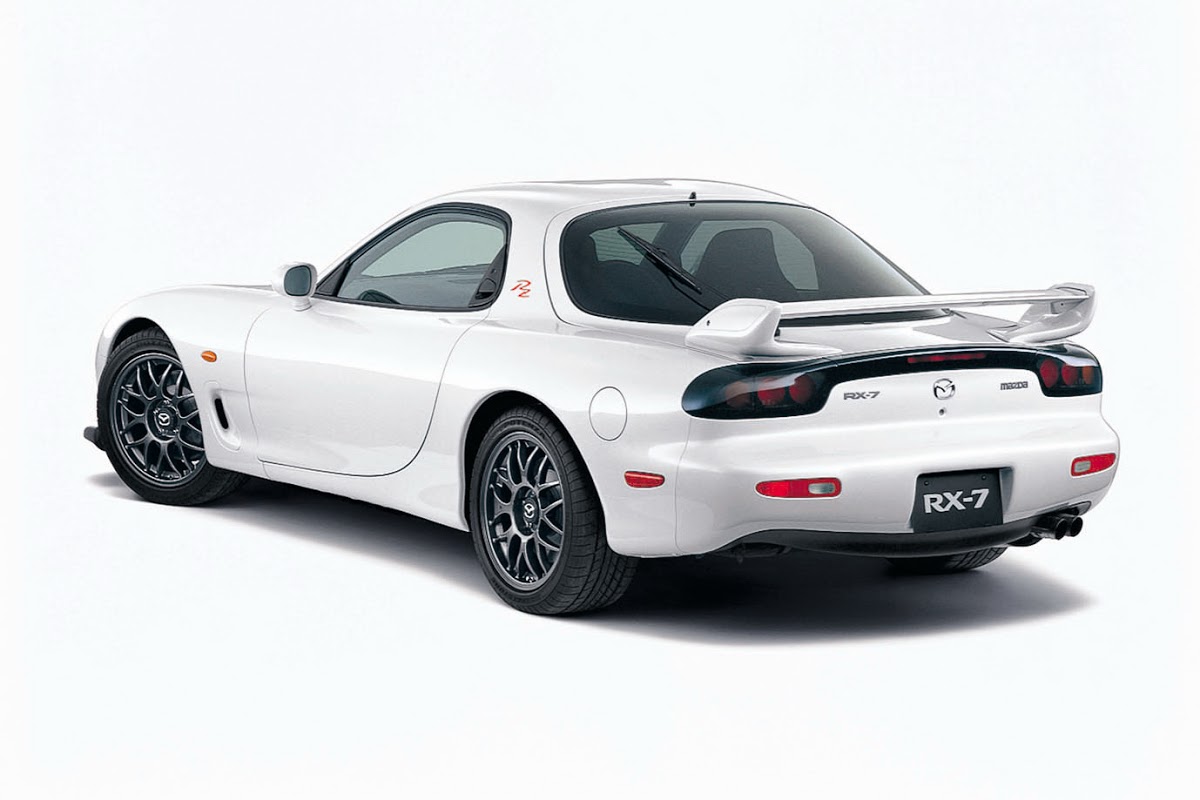The Mazda RX-7 did things differently. In the 90s, the way of big Japanese sportscars was to go into innovation overdrive, with the results often translating into excess heft.
The Nissan 300ZX had its HICAS rear-wheel steering system but weighed 3,570 lbs (1,620 kg). The Mitsubishi VR-4, with all-wheel drive and moveable aero, tipped the scales at 3,737 lbs (1,695 kg), and the Toyota Supra wasn’t much better at 3,480 lbs (1,578 kg).
Mazda, on the other hand, went super light. The base FD was under 2,800 lbs (1,270 kg). The crash diet that the RX-7 had to go on was internally called “Operation Z.” And it worked, shaving around 200 lbs (~91 kg) off the car’s final weight. It would have been lighter still had the engineers not have caught a potentially fatal design flaw in the sills — proof that a car can be too light for its own good.
The engine, too, boxed in the featherweight category but punched like a heavyweight. The 13B-REW rotary motor that powered the FD RX-7 is smaller than a 3hp generator yet managed to put out 255 hp courtesy of twin sequential turbos. Not only did it perform better than the immediate competition, but the FD beat the Acura NSX, a car with a price around double that of the RX-7, around the Streets Of Willow by 1.5 seconds.
Watch: Toyota Supra Vs. Mazda RX-7 Vs. Nissan 300ZX: What Makes These ’90s Legends Desirable Today?
With double wishbone suspension all around, it won Road and Track’s Best Handling Car In America Award and broke the record for the highest grip level ever recorded for a road car.
Sure, this was all good stuff — but happily, it looked the business too. Mazda realized that the FD RX-7 had to be a clean-sheet design, especially as its predecessor, the FC, had never been able to shake the 944-on-a-budget image.
The design brief was pretty simple in theory, but significantly harder to execute: make a future classic — the kind of design that would look at home on the lawns of Pebble Beach. It was a task that Mazda’s Californian design house executed perfectly, with the FD RX-7 picking up a fair number of design accolades along the way.
So why then, did the RX-7 last only three years in the U.S? One reason was that, despite the less complex approach to the ancillaries (no fancy all-wheel steer, mid-engine, moveable aero, four-wheel drive gimmicks here), the concept of the rotary engine itself was a tricky one to get right. Aside from NSU, which faded into obscurity, it was only Mazda that had persisted with the engine type.
See Also: The Best Cars I’ve Driven #3: Mazda RX-7 FD Spirit R
While the 13B-REW was a gem of a powerplant, it was also as finicky as a toddler avoiding their vegetables. The car had to have a sequential twin-turbo setup as it just didn’t move enough air at low speeds to move both simultaneously. Despite the intention to have a seamless switchover between single and twin-turbo operation, what drivers were often faced with was a valley of death, where power drops before the second snail engages and brings it back — something that wasn’t too welcome in the corners.
The 13B wasn’t exactly known for its reliability either. Synthetic oil caused it to chew up apex seals, ignoring coolant changes would rot the motor, and stalling it when cold will flood the engine. Even when it was new, Car And Driver’s example had to be sent back to Mazda nine times in 35,000 miles (56,330 km) before a water pump failure finally sealed the car’s reputation.
But despite all this, the FD RX-7 is a proper driver’s car, and a gorgeous one at that. According to Hagerty’s Jason Cammisa, it’s only a matter of time before we start seeing them on the concourse lawns of Pebble Beach — for all the right reasons.






